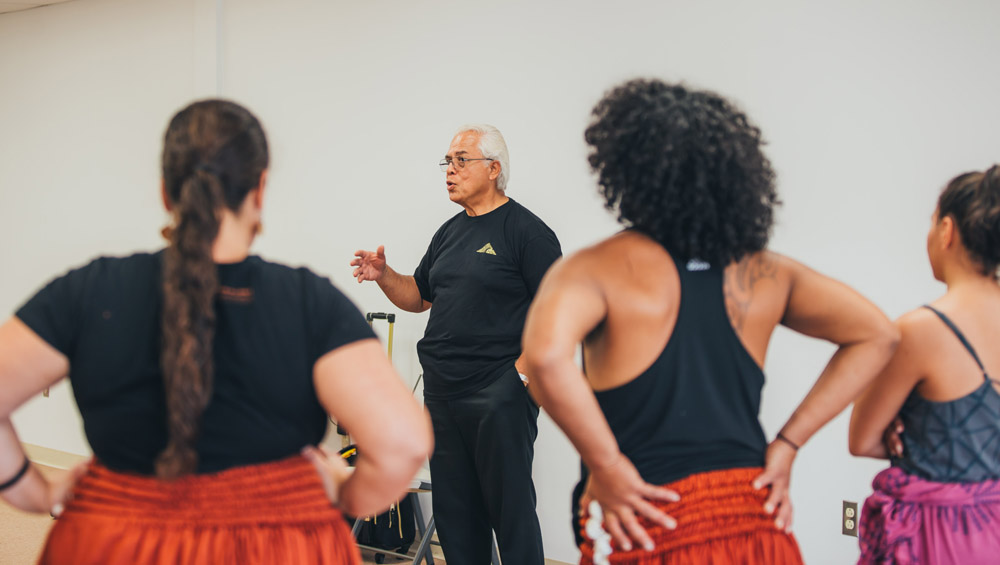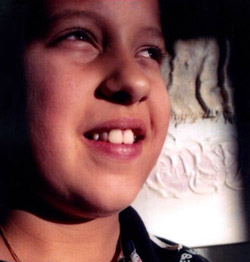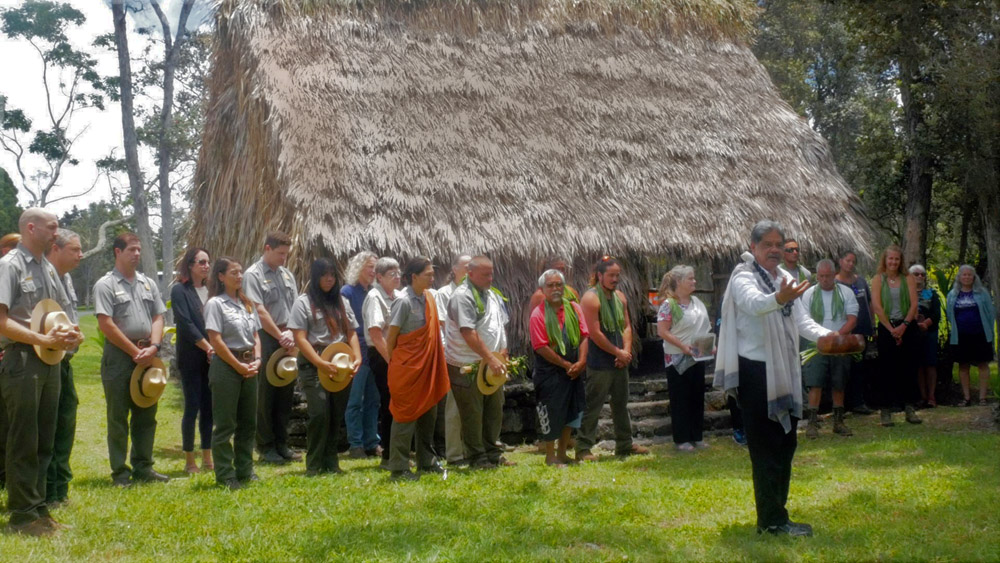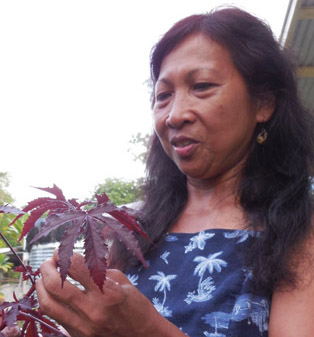
Growing a Sustainable Future on Hawai‘i Island
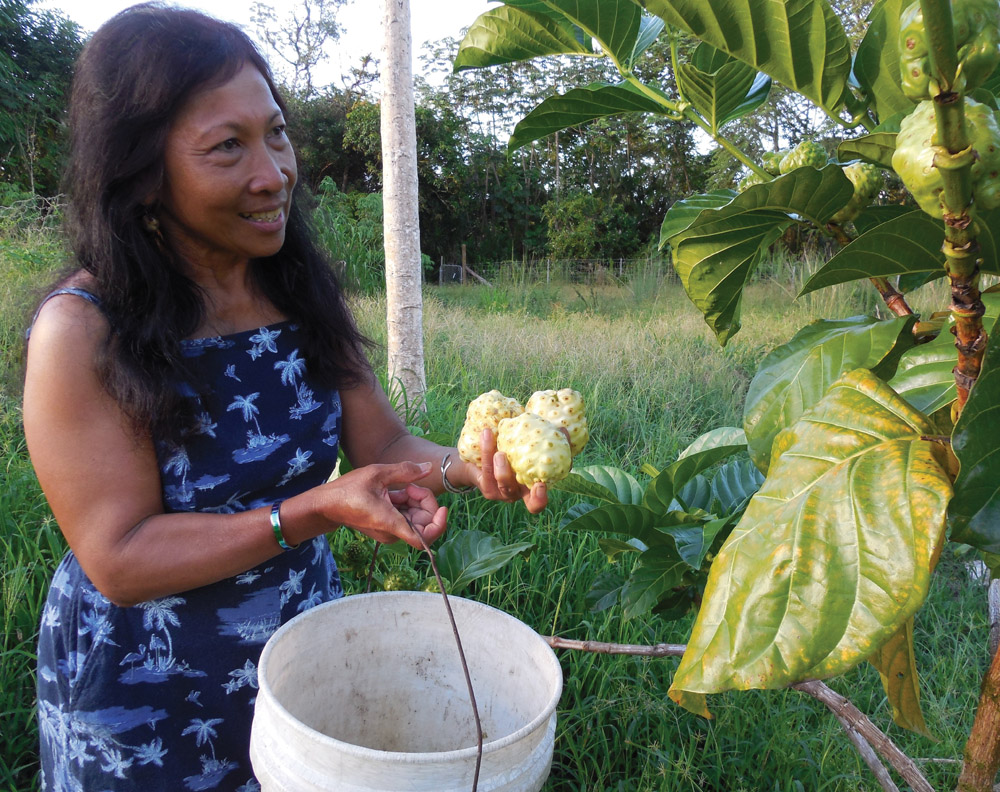
By Stefan Verbano
David Reppun walks barefoot along the mounded rows of taro. He stops at a full-grown hedge of the broad-leafed Polynesian staple, announces its variety name, and leans into the mass of green, selecting a stem and bending it down to inspect coloring and venation. A stream of descriptors comes next: taste, density, suitability for “table taro” versus poi, and—perhaps most importantly—whether this specific variety is well-suited to the growing climate at his 25-acre farm in Ka‘ohe Homesteads, just outside Pāhoa.
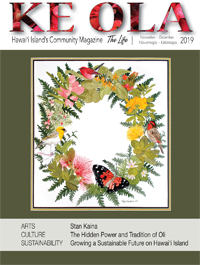
David comes from a long line of native Hawaiian taro (kalo) farmers on O‘ahu, and currently propagates two dozen organic varieties using little more than grass clippings as fertilizer. When the rows grow tall and corms mature, he harvests the woody-skinned root vegetables and sells his crop to Island Naturals Market.
Rattling off taro minutia with bent stalk in hand, clad in cutoff jeans, his wispy salt and pepper hair swaying in the breeze, the 64-year-old man hardly seems like the business-minded type. He talks like a scientist—about observational data, trial and error, taxonomy, and biochemical processes. He’s learned a great deal about agriculture the same way ancient Hawaiians did—through meticulous observation of natural phenomena, which drives him to keep his farm as closely aligned with nature as possible. It’s easy to imagine the food cornucopia lining Hawai‘i Island’s grocery store shelves coming from such picturesque, natural places as David’s farm in the misty hills above Pāhoa. Except it doesn’t.
According to data from local Hawai‘i Island nonprofit The Kohala Center, roughly 85 percent of the food consumed on the island is grown and processed elsewhere. Despite ample available farmland and a centuries-long heritage of food sustainability, its residents have come to rely on a complex, transcontinental web of producers, processors, and distributors, ocean freighters, semi-trailer trucks, and cargo planes, all just to keep the island’s store shelves stocked.
Hawai‘i Island’s ports are 2,500 miles from the nearest continental US port. Imported goods reflect this immense distance in their prices—the complexity and resource-intensiveness of the networks that bring these far-away products to the island. Boxes of cereal, cartons of eggs, gallons of milk, blocks of cheese, and loaves of bread can end up being twice as expensive compared to mainland prices.
According to the nonprofit organization Feeding America (a nationwide network of more than 200 food banks), in 2017 approximately 160,000 residents across Hawai‘i were considered “food insecure.” This data was based on the US Department of Agriculture (USDA) definition of “lack of access, at times, to enough food for an active, healthy life for all household members, and limited or uncertain availability of nutritionally adequate foods.” Hawai‘i Island itself was home to 23,190 food-insecure individuals in 2017, according to the Feeding America data.
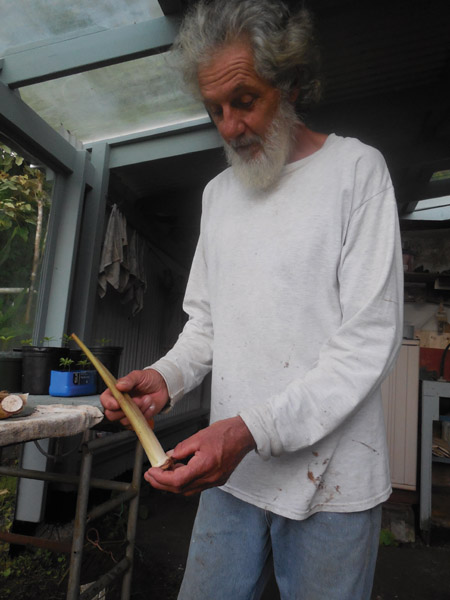
Interestingly, that means more than 23,000 people without enough food to eat live on an island which, some researchers say, less than 250 years ago had a larger human population than it does today, and was able to keep everybody relatively well-fed (save for a few brief war/famine periods) without the transcontinental web.
“The Hawaiians, over many, many generations, figured out how to grow food here that collected carbon, conserved native species, and improved the soil,” says Craig Elevitch, co-director of the Hawai‘i Homegrown Food Network (HHFN), a Hawai‘i Island-based organization working to create a self-sufficient, community-focused food system. “They did it for hundreds of years, so we know it works. We just need to bring it into our modern context…it’s a good example of what can be attained here.”
In 2008 and 2009, Craig presented a year-long series of food security workshops on Kaua‘i, Maui, and Hawai‘i Island, out of which grew the need for HHFN as a centralized resource for the myriad groups working to increase the islands’ local food production. He describes the past hundred years of food policy in the state as an “experiment,” before which there was an abundance of nutritious, organically grown goods for everyone, yet in its wake has left one in ten Hawai‘i residents today food insecure. The seeds of this old, abundant, regenerative system still exist though, he says, and they continue to flavor the culture of food producing and sharing in the islands; a culture that hints at a past of plenty.
“Who we are as people who live in Hawai‘i can be greatly enhanced by having a lot of food around that we grow right here,” Craig says. “It’s the abundance of avocados and mangoes and citrus and bananas that makes us so special. It defines who we are and enriches our connections as a community.”
Abundant indeed. Anyone whoʻs gone for even a cursory visit to the island can remember seeing mango trees with piles of fruit rotting on the ground underneath, or zigzagging around fallen coconuts.
Then there are the more than 4,000 farms on the island: South Point macadamia nut plantations that seem to go on forever, postcard cliff-side Captain Cook coffee estates, sun-soaked Hāmākua lychee meadows, and rocky Kapoho papaya fields—where 80 percent of the state’s papayas were once grown, and where 2,000 acres now lie buried beneath lava from the 2018 lower Puna eruption. Fishing boats ply the bays and deep waters daily catching fish like ‘ahi, aku, ono, and mahi mahi. Forty cattle ranches across the island, most in the Kohala area, produce pasture-raised beef for local consumption, along with a handful of poultry operations, and one sole remaining dairy farm.
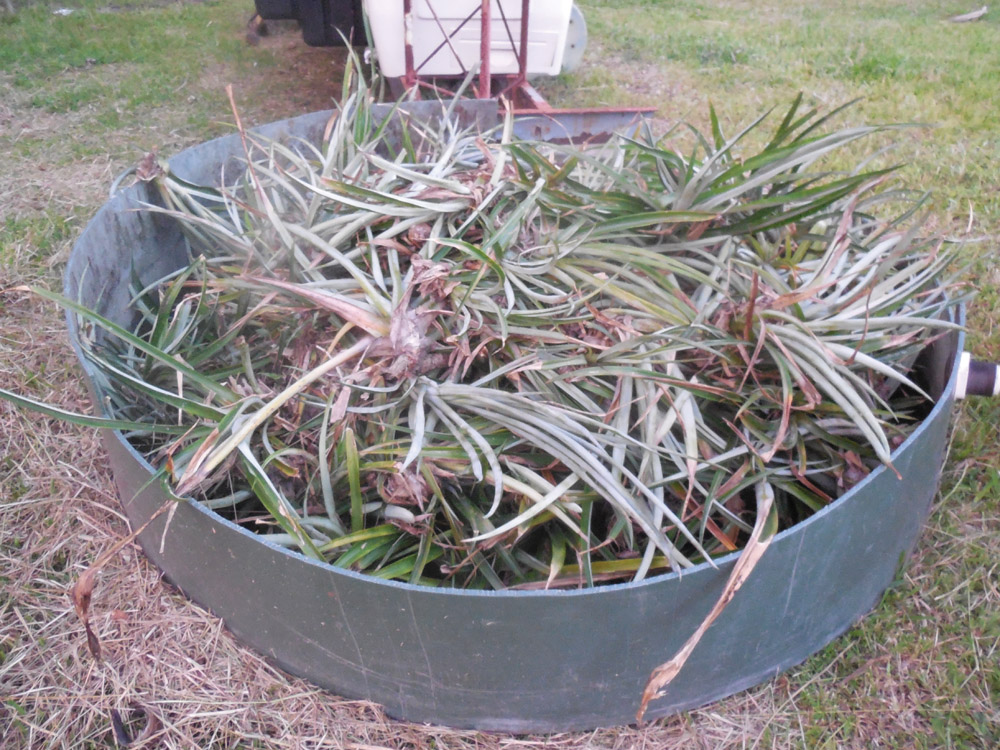
What Can Be Done?
But even with such abundance, the specter of hunger still looms over the heads of many Hawai‘i Island residents. Few people see it as clearly as Kristin Frost Albrecht, the executive director of The Food Basket (Hawai‘i Island’s food bank), which serves 14,000 adults and children every month.
“The price of food here is about 61 percent higher than it is on the continent,” Kristin says. “It just means that food costs are outrageous, and salaries aren’t any higher, and in many cases lower, so lots of people are struggling to make ends meet.”
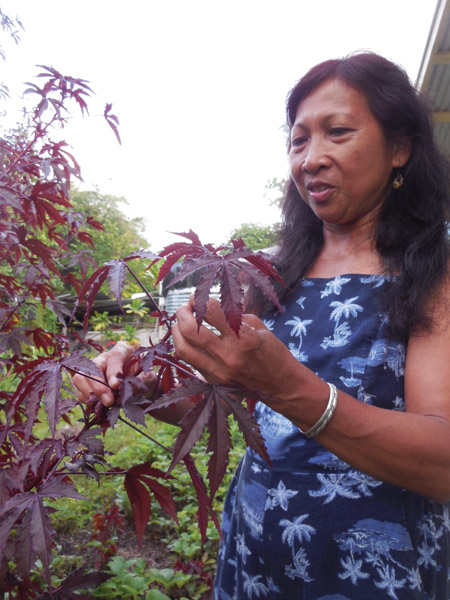
The Food Basket’s programs are impressively diverse: “Keiki Backpacks” for food-insecure schoolchildren distributed before long breaks, a “Kūpuna Pantry” that supplies an average of 35 pounds of food per month to 1,100 at-risk Hawai‘i Island seniors, a paid CSA program with over 200 families receiving weekly fresh food boxes—even a program called “Da Bux,” where EBT customers receive 50 percent off island-grown produce at KTA.
And the need keeps growing. Since the concurrent natural disasters of Hurricane Lane and the 2018 lower Puna eruption of Kīlaueaʻs East Rift Zone from May–August last year, The Food Basket has seen a staggering rise in requests for help. These situations, Kristin says, are a small example of what Hawai‘i Island would face if—by way of crisis such as natural disaster, political instability, or market collapse—its fragile food distribution network ever were to falter.
“Definitely our low-income community would be most affected,” she says. “We’ve seen a 30 percent increase in our food distribution from last year. Thereʻs just that many more people not able to make it to the end of the month. The impact of those disasters is a little taste of that scenario.”
Other island nations have huge seed banks and fertilizer stores in case they get “cut off,” says Bruce Matthews, professor of soil science and dean of the College of Agriculture, Forestry and Natural Resource Management at the University of Hawai‘i at Hilo.
“We donʻt have anything like that stored to start ourselves up,” Bruce says, in regard to the agricultural inputs needed for emergency food production. “Itʻs pretty scary that we donʻt have any stockpiles to speak of.”
The professor sees much of the answer to Hawai‘iʻs food insecurity resting in technological innovation: the replacement of “external inputs” with technologies like biofuels for transportation made from algae and sugarcane, locally-produced organic fertilizers, fish and livestock feeds, and bio-intensive farming that maximizes recycling of waste products.
“Innovation could definitely help drive prices down,” Bruce says. “Technology is going to make a big difference in terms of cost saving and how we progress…Hawai‘i could really become a test bed. Where will Hawai‘i be in this whole thing? Will it lag behind? Right now we are being looked at as somewhere that isn’t that proactive. Iʻd really like to see that change…[to] try to be at the forefront—a model for the rest of the world.”
A Model Plan
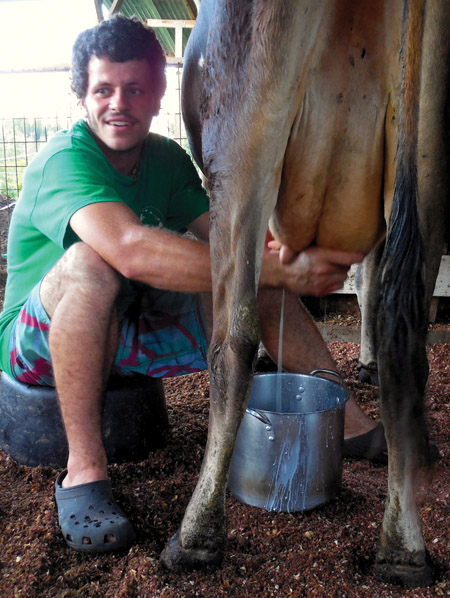
Dusk begins to fall in Punaʻs Orchidland Estates, and James “Narayan” Higgins is sitting on an overturned plastic tub milking cows at the Krishna Cow Sanctuary. (See story in Ke Ola Magazine’s September/October 2019 issue.) The nine-acre organic, humane homestead chooses not to slaughter members of its herd for religious reasons, letting the happy, gentle bovines live out their lives to the fullest, grazing lazily among the scrubby brush and taro patches.
Between the satisfying slaps of pressurized milk jets against metal pail, Narayan talks numbers: nine milk cows and five calves on the sanctuary’s main property, with a herd of almost 80 more living at seven different “satellite pastures” across the island from Na‘ālehu to Hakalau. He explains how the farm’s waste products are recycled as inputs: cow manure and urine are collected in a deep bedding of local sawmill sawdust, which is then shoveled out and either sold to local growers or used on the land as fertilizer for plants and grasses, in turn creating even more forage for the animals.
“Nature is all about cycles,” the 28-year-old cow guru says. “You just have to find the cycles that keep things going.”
What would it take to create more of these types of sustainable cycles in Hawai‘i Islandʻs agriculture? We encourage you to start this discussion in your community. Even a small kitchen garden is a good start. ❖
For more information:
hawaiihomegrown.net
hawaiifoodbasket.org
facebook.com/KrishnaCowSanctuary/
kohalacenter.org/planethawaii/food
Mahalo Ahualoa Farms—Local Agriculture Story Sponsor
